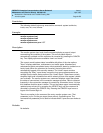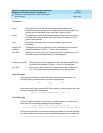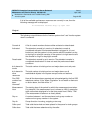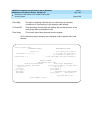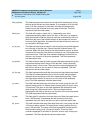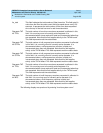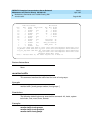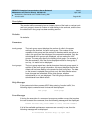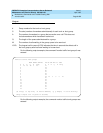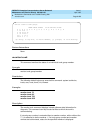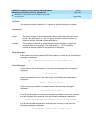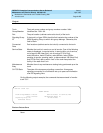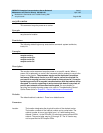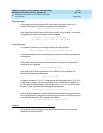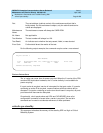
DEFINITY Enterprise Communications Server Release 5
Maintenance and Test for R5vs/si
555-230-123
Issue 1
April 1997
Maintenance Commands and Trouble-Clearing Aids
Page 8-261monitor traffic
8
Description
The monitor traffic command gives an instant picture of the load on various trunk
and hunt groups in terms of number of calls waiting to be serviced, and the time
the oldest call in the group has been awaiting service.
Defaults
No defaults.
Parameters
Help Messages
If the system technician presses HELP after entering "monitor traffic", the
following object command word choices will be displayed:
hunt-groups trunk-groups
Error Messages
If during the execution of a command a resource problem occurs that requires
the user to restart the command, then the following message will be displayed:
Command resources busy; Press CANCEL to clear, and then resubmit
If all of the available maintenance resources are currently in use, then the
following message will be displayed:
All maintenance resources busy; try again later
trunk-groups The trunk group report displays the number of calls in the queue
waiting to be serviced, for each trunk group. The number of the
members in the group and the number of members which are active on
calls in the group are also displayed for comparative analysis. Only the
administered trunk groups are displayed, up to a maximum of 60
groups. The user may specify the starting trunk group. For example, if
the user entered 5, then the trunks displayed would be from group 5
and up, 1-4 would not be displayed.
hunt-groups The hunt-group report has a similar format as the trunk-group report. In
addition to the trunk-group information, this report displays the time the
oldest call has been waiting in the queue for each hunt group. The data
on the screen is updated every minute, only the fields whose values
have changed are refreshed. All the hunt groups, whether
administered or not, are displayed. The hunt groups that are not
administered have blank values.



